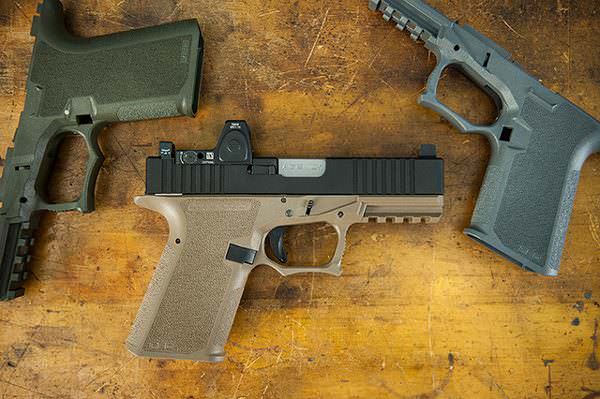
The United States Government has filed for a Writ of Certiorari with the United States Supreme Court challenging the Fifth Circuit Court of Appeals decision to uphold a District Court’s preliminary injunction enjoining the Bureau of Alcohol, Tobacco, Firearms and Explosives (ATF) from enforcing the final rule on frames and receivers (Final Rule 2021R-05F).
The case, VanDerStok v. Garland, was filed in Texas by Jennifer VanDerStok, Michael Andren, the Firearms Policy Coalition (FPC), and Tactical Machining L.L.C challenging the ATF’s rule that reclassified unfinished frames as firearms. After success in the case, multiple other companies in the 80% firearms space filed motions to intervene. After JSD Supply filed its motion to intervene, District Court Judge Reed O’Connor issued a nationwide injunction, knocking down the rule in its entirety.
Lawyers for the Department of Justice (DOJ) appealed the judge’s decision to the Fifth Circuit Court of Appeals, asking the court to overturn the injunction. A three-judge panel decided to let most of the injunction stand, effectively killing the rule. Instead of asking for an en banc hearing where the full Fifth Circuit would hear the case, the government requested SCOTUS to stay the decision until they could petition the high court to hear the case.
Most likely, the government chose to forgo the request for an en banc hearing because of the makeup of the Fifth Circuit. The court ruled in a 13-3 decision against the ATF’s bump stock rule in Cargill v. Garland. The plaintiffs in that case made arguments similar to those in VanDerStok, including violations of the Administrative Procedures Act (APA). Chances are small that the en banc would rule differently than in Cargill, which is currently docketed for SCOTUS to hear.
The Supreme Court, by a 5-4 margin, would grant the stay until the government could file a Writ of Certiorari with the court. The stay will remain in effect until SCOTUS decides whether to grant Cert. If the high court doesn’t take up the case, the stay will automatically be removed, meaning the rule will again be dead.
The government’s main argument for the Supreme Court to grant Cert is that it is important for public safety. This argument appears to be trying to apply “interest balancing,” but that legal test was struck down in the Bruen decision, which states that only the original text, tradition, and history of the Second Amendment can be considered when it comes to firearms. The government lawyers seem to be trying to walk back the SCOTUS opinion that Associate Justice Clarence Thomas wrote.
“Ghost guns provide a ready means for felons, minors, and others who are prohibited from buying firearms to circumvent the law—thwarting Congress’s ‘comprehensive scheme’ intended to ‘verify a would-be gun purchaser’s identity,’ ‘check on his background,’ and thereby keep guns out of the hands of criminals and others who should not have them.’” The government states. “And on the back end, the lack of records and serial numbers means that ghost guns have ‘severely undermine[d]’ law enforcement’s ability to ‘determine where, by whom, or when’ a firearm used in a crime was manufactured and ‘to whom [it was] sold or otherwise transferred.’ That, in turn, has impaired law enforcement’s ability to apprehend violent individuals who may pose an ongoing threat to public safety. By ensuring that ghost guns are regulated as what they actually are—firearms—the two challenged provisions of the Rule ‘prevent easy circumvention of the [Act’s] entire regulatory scheme’ and are thus ‘critical to public safety.’”
The Supreme Court doesn’t have a timeline for deciding whether to grant Cert, but the decision will have a lasting impact on the 80% firearms market and other ATF rules.
About John Crump
John is a NRA instructor and a constitutional activist. John has written about firearms, interviewed people of all walks of life, and on the Constitution. John lives in Northern Virginia with his wife and sons and can be followed on Twitter at @crumpyss, or at www.crumpy.com.







